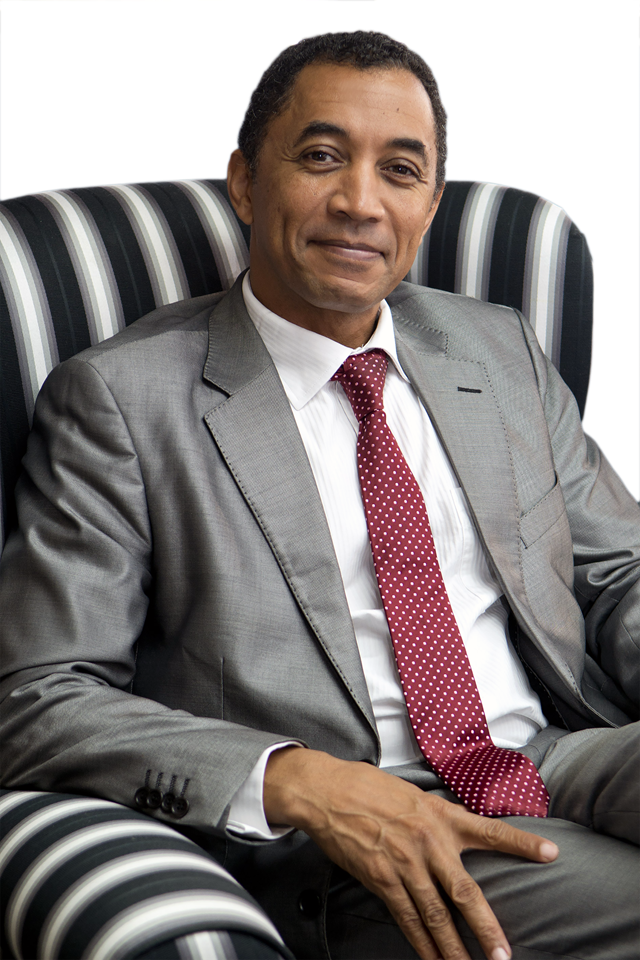 Professor Swartz served as VC for two successive and successful terms from January 2008, a role and position that he has held with great distinction.
Professor Swartz served as VC for two successive and successful terms from January 2008, a role and position that he has held with great distinction.
Council is extremely proud of the pioneering role and advances made in the development and transformation of then University under the leadership of Prof Swartz. He anchored the University on a clear post-merger strategy, occasioned by a new strategic Vision 2020.
During his terms of office, the University scored a number of landmark achievements that took the University well beyond the challenges associated with the ‘merger’ years. Some of the major achievements include:
-
Growth in overall student numbers from 22 661 in 2008 to over 27 848 in 2016, whilst graduation numbers rose from 4464 in 2008 to 6258 in 2016;
-
Massive increase in postgraduate student intake, from 2914 in 2008 to 4162 in 2016;
-
Research output productivity rose from 504.838 to 897.857 total weighted research output units from 2008 to 2016, with 12 new prestigious Research Chairs, two A-rated; nine B-rated and dozens of C-rated scientists joining NMMU’s ranks;
-
Total number of permanent staff grew from 1524 to 2154 in the same period, with numbers of black staff rising from 42.3% to 59.7%, and women comprising 56.8% and men at 43.18% of total workforce in the same period;
-
Total recurrent income in 2008 stood at R1.063b, by 2015 this rose to R2.052b, a 93% increase in revenue; total fixed asset value rose from R1.404b to R3.026b by 2015, registering a 115% increase over this period;
-
Total financial aid contributions, in the form of bursaries and loans, rose from around R250m in 2008 to over R600m by 2016;
-
Expansion of the University with the formation of a new Ocean Sciences Campus, and with this, attracting R87m from DHET (the Department of Higher Education & Training) for this Campus.
-
Converting the University’s Bird Street Campus into a dedicated Arts and Culture campus, with a new Art Gallery, to support the creative arts sector;
-
Successful campaign to establish South Africa’s 10th Medical School at the University by 2020;
-
Modernisation of the Missionvale Campus and the George Campus, on the back of over R350m of capital investments from 2008 to date;
-
Securing ministerial approval of a name change to Nelson Mandela University, key to repositioning and rebranding the University globally.
Under his leadership, Mandela University launched over fifteen (15) cutting-edge centres and institutes aimed at discovery, application and innovation in the natural and human sciences. In the humanities, these include CANRAD (Centre for Advancement of Non-Racialism and Democracy), Centre for Community Schools, (CIPSET) Centre for Post-School Education and Training, FishFORCE Academy, Refugee Rights Centre, Family Business Unit, Govan Mbeki Maths Unit, and (SAIMI) the South African International Maritime Institute.
In the natural sciences, these include inter alia, the new Institute for Coastal and Marine Sciences (CMR), Centre for High Resolution Electron Microscopy (HRTEM), Centre for Coastal Palaeoscience, AEON (Africa Earth Observation Network), Centre for Broadband Communication, Institute for Chemical Technology (Innoventon) CoalAlgae, and the Centre for Rubber Science and Technology.
Many innovations are arising from the work of this new generation of entities and the difference they are making in both civil society and industry. Over the past decade, the University has also spent great effort on getting the social issues right, notably issues of social transformation. This includes a major focus on creating a new institutional culture to shed the baggage of the past, and enabling staff and students to firmly embrace values of non-racialism, diversity, social inclusion and equality.
As Vice-Chancellor, his phenomenal strategic fundraising campaign over the last decade raised well over R2billion. This new funding paved the way for the most far-reaching capital expansion in property, plant and intellectual capital since the original creation of the University. Examples of these, to name a few, include three new Libraries, one Science Complex, a new Business School, two Engineering Buildings, one new Education Complex, a Biokinetics Complex, an Atomic High Resolution Centre, and three large Lecture Hall complexes in Port Elizabeth and George.
Sincere thanks and appreciation is extended to Prof Swartz for his years of dedicated service and singular commitment to ensure that the University grows to significant heights. He has the distinction of being the longest serving VC currently in South Africa and has brought a wealth
of experience in regard to higher education, research and innovation, as well as social change.